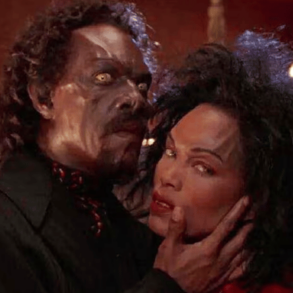
The traditional modernism of art history textbooks is being questioned, for the second year in a row at Frieze Masters, by the French nonprofit organisation AWARE (Archives of Women Artists, Research & Exhibitions). Following the success of their Spotlight section at the fair last year, the nonprofit has worked with Frieze Masters to create a brand new section. Entitled “Modern Women,” this space is a reflection of AWARE’s commitment to raising the profile of women artists on the global stage. It is made up of 10 booths, each focusing on a single artist working between 1880 and 1980. Through the diverse work of these women, a new vision of the 20th century emerges.
“It was important to us to move away from a narrative in which modernism is presented as European and masculine,” said AWARE co-founder and director Camille Morineau. The works featured this year were selected by Morineau, along with Eléonore Besse and Matylda Taszycka from the AWARE team, from an open call for submissions from galleries. This partnership between commercial and noncommercial institutions points to an area of untapped potential in the art world. “Frieze Masters is a public space dedicated to art and, in particular, art history, unlike many other contemporary art fairs,” explains Morineau. “It echoes AWARE’s mission, which is rewriting art history from a more egalitarian and feminist perspective.”
AWARE’s work comes at a pivotal moment for the value of work by women on the secondary market. As of 2022, prices for work by women were rising 29% faster than work by men. However, according to the annual Burns Halperin Report on the representation of women artists in institutions and on the market, sales of art by women still makes up only 3% of global art sales and 11% of museum acquisitions.
Most of those sales are of work by superstar names like Yayoi Kusama, Joan Mitchell, Louise Bourgeois, and Georgia O’Keeffe, with lesser-known artists falling through the cracks. “As the major problem for women artists is a lack of visibility,” Morineau points out, “the power of Frieze Masters is to give these artists more recognition.” Tate bought two works from the fair’s Spotlight section in 2022, and AWARE hopes that more museums will follow suit this year. Last year’s section “focussed on lesser-known artists and bodies of work, which we wanted to bring to the public eye,” Morineau said. This year, on the other hand, “most of the artists were successful during their lifetime, even if some were subsequently forgotten by art historians.”
A major theme addressed in the section is abstraction. For example, Perrotin’s selection of works by Anna-Eva Bergman focuses on the artist’s later abstract works, which incorporate silver and gold leaf to evoke the gleaming, icy landscapes of Scandinavia.
Across the way, in Vintage Galéria’s booth, the works of Hungarian artist Vera Molnár used algorithms and early computers to distort and disrupt the perfect geometry of predecessors like Kazimir Malevich and Piet Mondrian. Her series of imperfect shapes printed on old-fashioned continuous computer paper provoke questions about the instability and mutability of perfection. Textiles play a significant role in the work of both Sardinian artist Maria Lai and African American artist Faith Ringgold (on show at M77 Gallery and ACA Galleries, respectively), drawing attention to the sexist distinction between fine art and craft, which implies the inferiority of textiles through a feminized label. Each artist plays with this issue in different ways, and the conversation between their work pushes us to think about the vast potential of their chosen medium.
Another major theme across the booths is the female gaze. Both British painter Ethel Walker (whose works are on show at Piano Nobile’s booth) and French painter Émilie Charmy (at Galerie Bernard Bouche’s booth) often painted their own self-portraits and female nudes. These works are sensual and individualized, a contrast with female nudes painted by men, which are one of the most traditional compositions in Western art. The two booths, next door to each other, start a fascinating dialogue about queerness and the ways women look at other women.
Elsewhere, in Ciaccia Levi’s booth, the work of Jewish Italian artist Lisetta Carmi turns its gaze on trans women living in Genoa in the 1960s. Her photographs have a documentary feel to them, but are chiefly characterized by a deep intimacy: Carmi lived with the women she photographed and knew them personally. Having fled Italy during World War II, she felt a deep empathy for these women who shared her experience of marginalization within their own country.
The politics of inclusion are central to all of the booths. For example, abstract and Surrealist painter Paule Vézelay, whose work is on show at England & Co’s booth, attempted to integrate herself into the leading avant-garde groups in both Paris and London, but found herself excluded again and again. Her story is echoed in the biographies of all these women, in different ways. Though some names are more recognizable to us than others, all of them have faced the challenge of being written out of a narrative of art history that is still most often told by men.
This post was originally published on this site be sure to check out more of their content.





